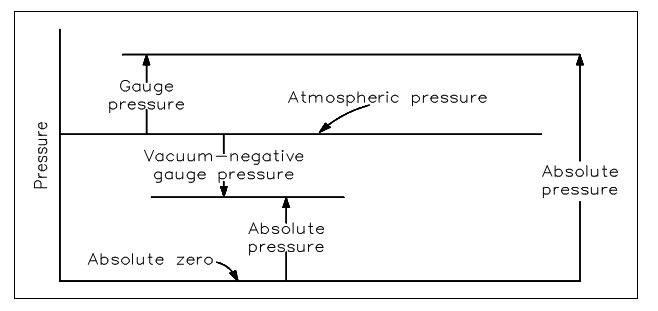Pressure Scales
Whenever pressure is measured associative to a perfect vacuum, and is termed as absolute pressure (psia); whenever measured associative to atmospheric pressure (14.7 psi), it is termed as gauge pressure (psig). The later pressure scale was developed since almost all pressure gauges register zero whenever open to the environment. And hence, pressure gauges measure the difference among the pressure of the fluid to which they are associated and that of the surrounding air.
When the pressure is below that of atmosphere, it is designated as a vacuum. The perfect vacuum would communicate to absolute zero pressure. All the values of absolute pressure are positive, since a negative value would point out tension that is considered not possible in any fluid. Gauge pressures are positive when they are above atmospheric pressure and negative when they are below atmospheric pressure. Figure illustrates the associations among absolute, gauge, vacuum, & atmospheric pressures, as shown in equations below.

Figure: Pressure Relationships
Pabs =Patm +Pgauge
Pabs =Patm -Pvac
Patm is atmospheric pressure that is also termed as the barometric pressure. Here, Pgauge is the gauge pressure, and Pvac is the vacuum. Once again, the illustrations below associating the different pressures will be useful in understanding the thought of gauge versus absolute pressures.